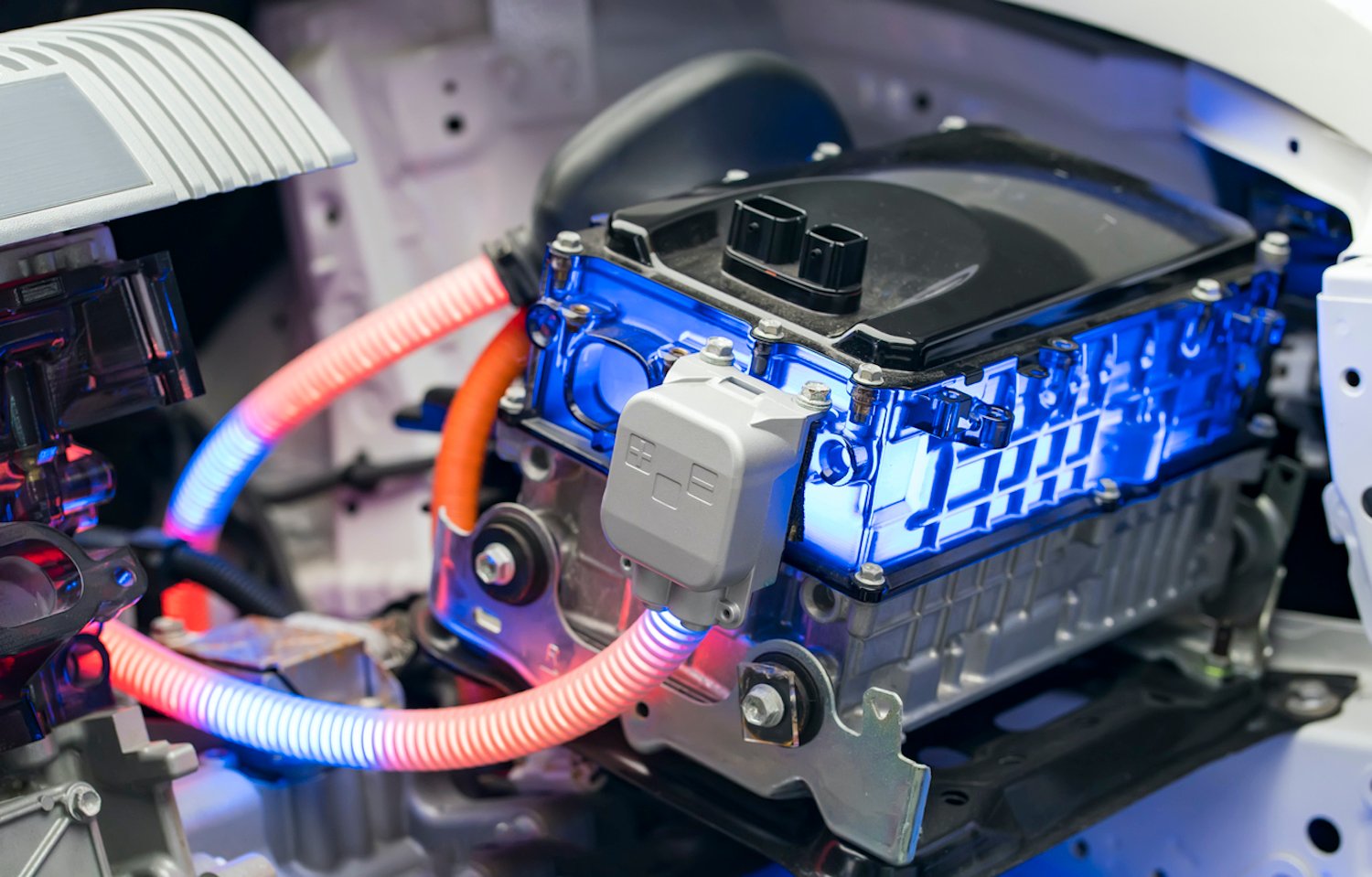If EVs are greener, why aren't we all rushing out to buy one?

How electric car companies are coming up with ingenious solutions to the range anxiety that's still a key issue…
We all know the future has to be greener. And that one of the biggest causes of climate change is the gas we use to get around – globally, transportation accounts for around a quarter of all CO2 emissions.
No wonder then that electric vehicles (EVs) are being hailed as our potential saviors. So much so that the EU has promised to get 30 million of them on the road by 2030, the same year Prime Minister Boris Johnson has banned the sale of new gas and diesel-powered cars in Britain.
This map, based on HERE location data, shows the availability of charging stations for EVs in the US.
The problem is, the public isn't quite buying into it just yet. It seems there are just too many drawbacks to owning an EV — especially a lack of charging points.
It's a concern governments around the world are taking seriously: in September, US President Joe Biden launched an ambitious US$7.5 billion plan to increase charging points in under-served areas.
But the number of charging points in a country isn't the whole story. There are a whole host of other issues from big problems like long charge times to smaller concerns such as too-silent engines that need to be solved before the world's love affair with EVs really begins.
And that brings us on to the central question:
Are EVs really good for the planet?
Many certainly think so — three million were sold throughout the world in 2020 and even the Popemobile's got in on the action.
Until the advent of EVs, while there were CO2 emissions in the manufacture of cars, they only really began in earnest after the vehicle had left the sales lot.
But the opposite is true of EVs — most of the environmental damage happens during the manufacture with comparatively little else once it's up and running.
That said, one study has suggested CO2 emissions from electric car production are a massive 59% higher than that of the production of traditional internal combustion engine (ICE) vehicles.
That's because EV batteries need about 20 different minerals including nickel, cobalt and manganese, and the process of mining them can be carbon-intensive.
But that's expected to change. While until recently car companies have been concentrating on just developing a lithium-ion battery that's suitable for EVs, they're now trying to develop greener versions.
And while the manufacture of EVs may be heavy on CO2 emissions, if you take their whole lifecycle into account, there are savings to be made.
Professor Anders Hammer Strømman of the Industrial Ecology Program at NTNU (Norway's University of Science and Technology), says: "Over the lifetime, in a typical European setting, you would generally be better with an electric vehicle.
"Broadly speaking electrification of light-duty vehicles seems to be a way of heading in the right direction."
That said, there's no evidence a reliance on EVs will cut congestion — in fact, some think they'll encourage more people to buy cars, increasing emissions.

Until drivers are confident EVs are easy and convenient to charge, they'll never be fully accepted.
Why aren't more of us buying electric vehicles?
EV's have a massive Achilles' heel — range anxiety. It seems too many of us are worried about being stranded if our car runs out of power to buy one.
According to a survey by UK insurance company Aviva, 81% of people said “range" was their biggest concern with switching to an EV, followed by “finding a charging point".
Studies have found the same in the US and even in Norway, perhaps the country that's warmed to EVs the most (half of all cars bought there last year were electric).
But there's no agreement on just how many miles a battery should last to make range anxiety a thing of the past. In one UK study, a third said 300 miles whereas for some it's as low as 75 or as high as 400.
What's definitely needed are enough charge points to ensure drivers never have to worry — but most countries have nowhere near enough. Across the US and Canada, there are just 34,000 — Norway, by comparison, has more than 16,000 despite being a fraction of the size.
And it's worst in rural areas — while people in cities typically drive much shorter distances than their rural counterparts so need to recharge less, they have far more options than drivers in the countryside.
Given that EVs need to be charged three to five times more than gas tanks need to be filled up, it's a serious problem.
It means that any decent-length journey has to be carefully plotted out in advance to make sure the right kind of recharging station is en route.
“To give you an example of where the pain points are for consumers, I was recently driving a premium electric car and had to stop and charge it every 200km," says Carolin Reichert, Vice President, Connected Mobility Services, Bosch.
“But because I had to use the manufacturer's charging service, I wasn't able to access all the stations I wanted to. Therein the problems began: I struggled to download the right app, had to call their customer services and ended up locking my credit card. It wasn't a pleasant experience. And it's this inconsistency and frustration that's causing charging anxiety and making the EV ownership experience more complex than it should be."
Until the charging infrastructure is standardized, why should drivers take a chance on electric?
And don't forget about charging times
It takes just five to ten minutes to pump enough gas into an ICE car to go hundreds of miles, but their eco-counterparts can take a very inconvenient ten hours to reach full charge.
Use this interactive map to find out how far electric vehicles can go on a single charge.
Why does it take so long?
“There are a few barriers to faster charging," says Andrei Iordache, Global Automotive Solutions Manager, HERE. “There's the capacity of charging stations to provide energy quickly, the ability of networks to deliver a high-power supply to stations, and also EVs themselves and the onboard charging technology with which they're fitted.
“Vehicle design is important. Not all EVs have the high-voltage architecture needed to take advantage of super-fast stations."
If they can, then EVs suddenly become more attractive. Australia recently introduced 350kW chargers between Melbourne and Sydney, delivering 250 miles of range in 15 minutes or 125 miles in eight.
In Ireland, 51 hubs charging up to eight vehicles simultaneously — and providing 60 miles of range in just six minutes — are being installed on major roads whereas a 150kW charge that delivers 100-miles in 10-15 minutes is being installed in the UK.
But it's not just all about fixed charging points
Other solutions are also currently under development. Toyota has trialed an EV that charges itself thanks to solar panels on the car itself while Sweden has opened an electrified road that tops up vehicles as they drive along.
Oslo is hoping to install a wireless system for taxis, with charging plates installed at taxi stands to work as they wait for fares while the British government is investing in a similar system for all EVs in the UK.
Meanwhile, Penn State engineers in the US have been looking at improving batteries rather than charging points and developed one that can reach a full 250-mile charge in ten minutes.
Then there's the possibility of battery swapping. Instead of plugging your car in and waiting, you drive to a 'swap shop' and a robot will replace your dead battery for a full one.
Obviously, there are problems — namely speed and demand. How many spare batteries would a station have to have not to run out at busy times? And would it overload the grid?
Don't expect them any time soon: when a family taxi business in India created a three-wheeler rickshaw with a swappable battery they soon came up against the problem of the best place to keep the spares and eventually scrapped the scheme.
And, of course, if we all go electric where's that power set to come from? It's an issue Governments around the world are tackling by establishing pilot programs and developing strategies to cope with a rush.
They include bringing in 'time of use' rates — so you'd pay higher to refill at the most popular times to try to spread the burden throughout the day — and 'vehicle-to-grid' technology that allows spare energy to be fed from cars back into the national network.
The map above shows where charging is accessible — and not so accessible.
How location technology can help
But none of this can or will happen overnight. So how can the public be persuaded that going green won't be a big mistake?
That's where location technology comes in. HERE EV Charge Points enable drivers to find the right charging facilities, fast. Wherever you're headed, the API can pinpoint charging stations along the way and recommend those with the correct type of connector for your vehicle.
It also provides dynamic map data about connector availability at charging stations for electric vehicles, including full detailed and dynamic data for specific individual stations.
HERE EV Routing extends their normal routing app to include EV-specific options such as details of energy consumption of the vehicle and charging stations along the route to make sure you don't run out while still optimizing your travel time.
HERE Technologies' Director of Product Management Christoph Herzig explains: "When [HERE] plans the routes, and optimizes the tour plans, we can take into account the actual range of the vehicle based on real-time battery-charge information, which comes from the connected telematics system."
It's a solution Hyundai, the world's fourth-largest seller of EVs, is using to accelerate the switch from ICE to electric.
With location technology from HERE, they've launched an EV simulator on their French website to help drivers plan the best route. It's a 'game changer', claims Clémentine Antunes, head of brand, strategy and communication at Hyundai France.
“This trip simulator will be like a best friend for the new EV consumer to be able to plan their trips and charge their Hyundai on the move," she says. “It's in real-time so you can see if a charging solution is available or not, or out of order, as well as find out information like how much it costs, and how long they have to wait. It's a way to plan and anticipate your future trip with a new EV car."
Heading in the right direction
One of the measures of success of any new motoring initiative is whether fleet managers are convinced.
And increasingly, they're switching to electric: German ride-pooling company MOIA already has 500 EVs — its entire stock.
In fact, a recent Bloomberg report estimated that by 2040, 30pc of fleets would be electric thanks to the saving on fuel, time and maintenance.
Of course, it's essential that managers do their homework before committing to electric. But, says Poppy Welch of UK EV advisors Go Ultra Low, range anxiety shouldn't be so much of an issue as many think.
“People are concerned about infrastructure, but that is improving all the time," she says.

Read more: Where do 30 million EV batteries go... to be reborn?
The old battery conundrum
So the case for switching to EVs is getting stronger but what about the other end of the life cycle? Just what do you do when your car battery is exhausted? Do you just throw the whole unit, with its precious mineral cargo, into the garbage dump? It's another issue for manufacturers.
And until recently there were few alternatives — lithium-ion batteries were thought too difficult to recycle: they were too big, too heavy and contained hazardous materials that could explode if dismantled incorrectly.
But a partnership between Nissan and 4R Energy came up with innovative technology that could recycle them into smaller battery packs. And if that fails, their components can be removed and used again.
“Reuse, resell, refabricate and recycle,' says François Lefèvre, an EV Specialist at Nissan Canada.
And that's not the only use for them. Other companies' solutions include using them to store energy from the grid for peak times, powering camping trailers and even lifts in buildings.
Proving that with the right initiative, EVs can become every driver's go-to machine.
Sign up for our newsletter
Why sign up:
- Latest offers and discounts
- Tailored content delivered weekly
- Exclusive events
- One click to unsubscribe